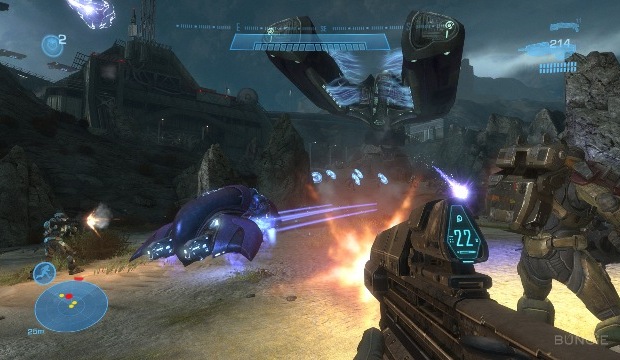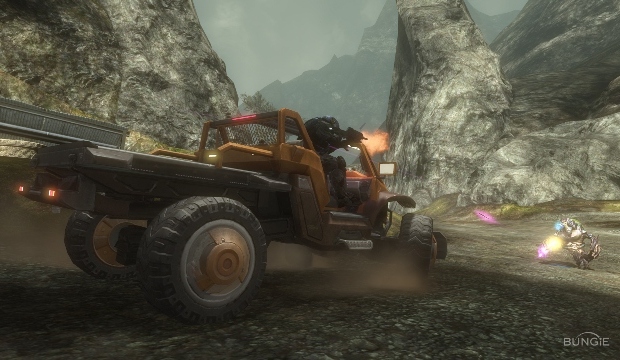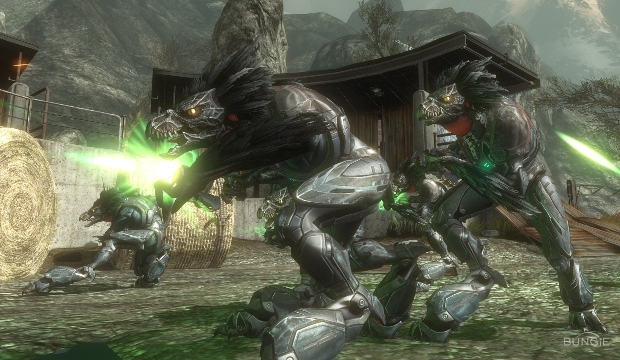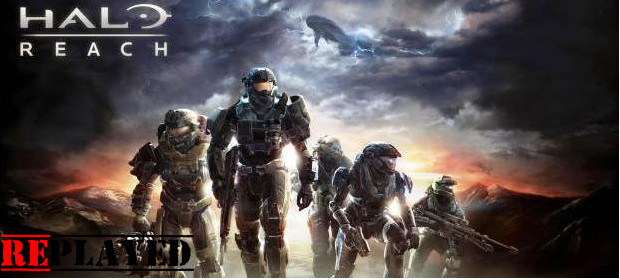Prequels are always tricky to get right. Typically, the most exciting events in any franchise’s chronology happen in the bit you’ve already seen – otherwise, what’s the point? So when crafting a sequel, you have to ensure that not only is the story you’re telling exciting and engaging, but that it ties into events already established in a meaningful and coherent way. If you get it wrong, the least you’ll do is piss off the fans; the worst you’ll do is discredit the entire franchise.
Take the Star Wars prequels. By their own right, they’re not awful films. The CGI is crusty and some of the characters (and casting choices) are ridiculous, but the biggest problem is that in order to brutally pummel the story into a workable prequel and connect it to the beloved originals, the writers had to take huge liberties with the established canon and leave enormous plot-holes that will never be filled. Why couldn’t Vader find Luke and Leia in the 17 years between Episodes III and IV, why did Luke’s twin sister look roughly ten years older than him and share not a single physical similarity, why did Obi Wan degrade so fast from somersaulting, wise-cracking badass into a wizened old hermit? Holes, holes, holes…
The best kind of prequels avoid this by tying directly into the events of the established storyline. They leave little room for questions and at least attempt to connect all the disparate threads into a cohesive arch. Halo: Reach, Bungie’s final love letter to the award-winning series they created way back in 2001, doesn’t get everything right in terms of storytelling, but it succeeds in presenting an affecting, compelling narrative – and ties up the loose ends it creates.

EXCEEDING THEIR GRASP: The first challenge Bungie faced was making us give a shit. We already knew how the war ended, because we’d already taken the inimitable Master Chief through three games from the attack on Planet Reach to the destruction of the Covenant leadership. We knew most of the history of the war, and of the Spartan super-soldiers themselves, because of the Extended Universe novels and spin-off titles like Halo 3: ODST and Halo Wars. So why would we care what came before?
By heading to the surface of Reach, Bungie created a setting we already knew was doomed. In that one decision, they made us care, because we knew before we’d even begun that no matter who we were introduced to, no matter how hard they fought, they would likely be dead before the credits rolled. Bungie built a world equally as beautiful and majestic as Halo’s ring-world, but filled it with civilians and human settlements like the clean white city of New Alexandria. They made it more personal – the Covenant weren’t just attacking military installations anymore; now they were hitting us where we lived.
In one move Bungie peeled away the empathy we’d come to feel for the Covenant Elites after they switched sides in Halo 2 and 3. They made us hate the enemy again, made us want to pummel Grunts and go toe-to-toe with Hunters. But that alone wouldn’t have been enough, because the backbone of the franchise was always the Quiet Man, the last remaining Spartan, Master Chief. His brooding presence, unfailing courage and consummate lethality had carried us through a trilogy; we loved him despite his silence (or because of it) and, more importantly, we felt we knew him. How would Bungie follow that without creating an unconvincing carbon copy?

A NOBLE CAUSE: The answer was to introduce not one main character, but six. In Noble Team, Bungie gave us a squad of super soldiers, all lethal, all determined, but all different. Criticisms were levelled against Reach for its fairly clichéd characterisations, but I found them unfair. Yes, the different team members follow specific archetypes, but they work. As a team, they gel. The unspoken bond between Commander Carter and second-in-command Kat highlights the fact that they are the only surviving members of the original Noble Team; Jorge’s gentle-giant nature and Emile’s slightly unhinged bloodlust make for a great paradigm; and sniper Jun, the natural loner of the group, acts as a lynchpin for the dysfunctional family dynamic.
And then there’s the protagonist, newest recruit Noble 6, who tops off the squad perfectly, his (or her, depending on player choice) mostly redacted military history summed up in a clever viral trailer that designates him as “hyper-lethal”, a label previously assigned to only one other Spartan, who just happens to be big and green and locked in stasis during the events of Reach.
For me, the team worked because I cared about them immediately. They’re in the dark from the word go, pushed to the forefront of Reach’s tragic last stand by circumstance. They’re in the wrong place at the wrong time, quite simply, but they do what they have to and, by God, they get the job done. We know before we pick up the pad that sacrifices will be made and lives will be lost, and in Reach, Bungie make every single one count.
SOMETHING TO BELIEVE IN: The deaths of Noble Team needed to have impact. In order to make their story not only relevant but essential, Bungie had to make each death important and pivotal, either in order to directly influence events (like the sacrifices of Jorge and Carter) or create a reason for the survivors to work harder (in the case of Kat and Emile), and make their deaths worthwhile.
It’s the overriding theme of sacrifice that elevates Reach’s story above the rest of the franchise, that singles it out, for me, as the best Halo of the series. The story pacing is excellent, as Bungie take time establishing Six and the rest of the team as highly-trained killing machines before the deaths begin. We’re treated to an incredible outer-space dogfight alongside Jorge, before storming a Covenant Corvette to plant a bomb. When the mission ends and someone has to stay behind to detonate the explosive, Jorge gives Six no choice but to leave, dropping him into low orbit above Reach and taking the hit for the team.
As a piece of storytelling, it’s been done before, many times, but it’s effective in Reach because you see it coming but don’t want it to. By this point you know Jorge, you like him; he’s dependable, brave rather than reckless, easily the most human of the group. By the time Kat’s death comes as a sniper-dealt sucker-punch a few missions later, Reach has made its point loud and clear: Noble Team are in it for the species, and they’re not getting out of it alive.
Reaching the end-game sees them all fall except Jun, whose departure alongside Dr. Halsey has thrown up questions about his fate ever since – though he is presumed to die off-screen, defending her at some point between Reach and Combat Evolved. The final reveal that the precious package Noble Six has been entrusted with delivering to the Pillar of Autumn is none other than AI, and series mainstay, Cortana is not only a massive high-five to the fans, but a coup-de-grace for Bungie. Chronology says that Cortana makes it aboard the Autumn, we know damn well she does (because even if there are slight disparities between the games and the novels, the events of Reach and Combat Evolved are set-in-stone canon), but suddenly it’s in doubt, and the final battle to reach the ship, the deaths of Emile and Carter, and Six’s heroic decision to man the mass driver cannon and defend the Autumn’s escape elicits a sense of accomplishment that Reach sorely needs.

KILL-TACULAR: Of course, all the story in the world is no good without gameplay to back it up, and that’s where Reach tends not to deviate from the established parameters. Reach is Halo, through and through, an evolution of Combat Evolved, yes, but retaining the immense playability and malleability that has always held Halo together. Those who choose to play Halo over Call of Duty, Gears of War and Battlefield largely do so because there’s a certain sense of freedom in Halo’s campaign that doesn’t exist elsewhere.
Calling it a “sandbox” (which I’ve heard people do) is a little misleading. It’s not that wide open, but at its heart Halo has never, ever been a corridor shooter; sections that drop you into claustrophobic tunnels and tightly enclosed spaces are few and far between. The real meat of Halo has always been found outside, as you discover hidden vantage points from which to snipe, or take a slightly different approach towards a group of enemies that will always react to your advances. Reach is no different and, despite that epic dogfight, its best moments are on the ground, among the troops, using the terrain for cover and tearing up the dirt on a Warthog. In fact, vehicular combat is ace in Reach, with more vehicles than ever before to commandeer, blow up and generally slam into the faces of your enemies.
The multiplayer portion is exceptional, deepening the experience in a way that feels like a natural progression for the series. Introducing combat enhancements (analogous to Perks elsewhere) and allowing you to fully customise your Spartan meant a more personal experience, and allowing you to buy gear with points earned in the field gave Reach’s campaign and multiplayer an essential sense of progression. It’s not entirely surprising that some people still choose to play Reach over Halo 4. There’s nothing wrong with 4, of course, but Reach’s multiplayer has a special place in the hearts of some – and several of the player made Forge maps are, frankly, astounding to play in.

AND THE HORSE YOU RODE IN ON: Without a doubt, Halo: Reach is one of the finest first-person shooters of this console generation. It’s fluid and slick, and its sheer replayability makes it immense. Not only is it a brave attempt to inject real emotion into a series better known for its bombast, it’s also a mostly successful one.
The heroic sacrifice of Noble Team stands as a testament to humanity’s courage in the face of the Covenant invasion, and manages to raise the stakes even though we all know the outcome. At no point in Reach’s running time is that element of valiant sacrifice better encapsulated than at the very end, when, having seen the Pillar of Autumn clear of Reach and into the fateful hyperspace Jump that would inadvertently pave the way for humanity’s victory, Noble Six stands alone against an overwhelming Covenant ground force and fights to the bitter end.
Quite how long you can survive during that post-credits sequence is unknown to me, but the effect is astounding, as Six’s visor cracks with consecutive hits and he eventually removes it, dropping it to the dirt as the enemy finally overcome him. The only way for a badass to die is on his feet, and it’s a fitting finale to an exceptional campaign.
Replaying Halo: Reach, and indeed Halo 4, it’s hard not to get excited about where this franchise will go on next-gen consoles. While it will never return to Reach, the depth of emotion is something that seems to be here to stay, as 343 Industries crafted an engaging, tear-jerking tale in Halo 4 that might never have been considered if not for the success of Bungie’s final hurrah. As far as I’m concerned, no matter what becomes of the franchise or what high-tech wizardry 343 employ on Xbox One, Reach will always set the bar for this series.





